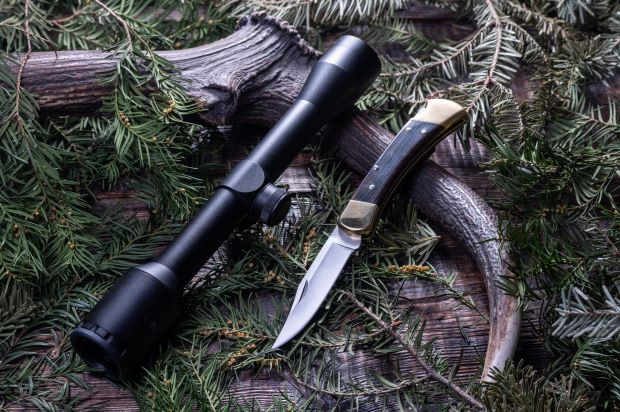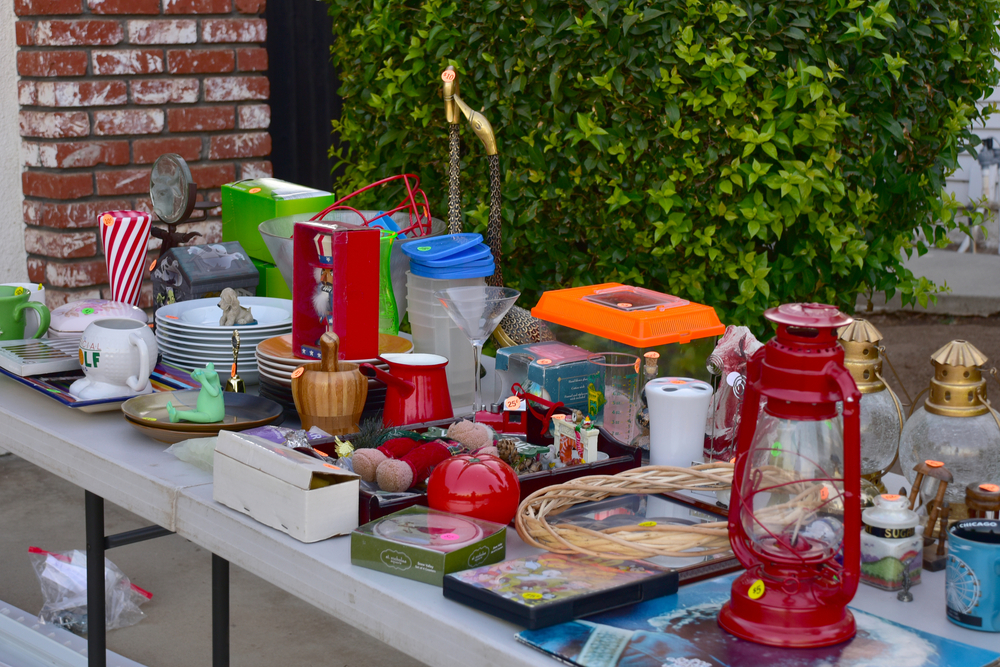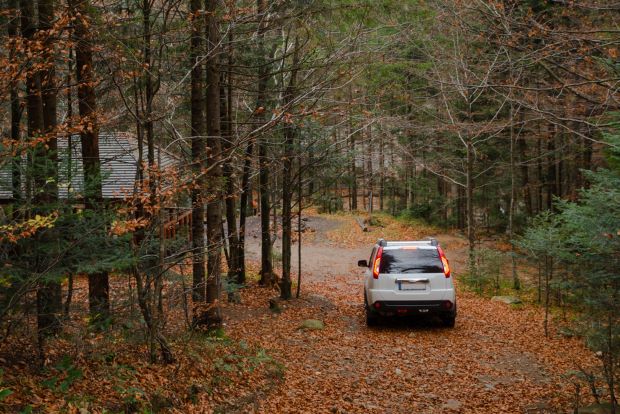From the pocket monocular to night vision and thermal imaging, optics give the survivalist an edge and the ability to avoid trouble.
This article will discuss the principle optic technology available to survivalists and their applications.
Monocular & Mini-Binoculars
A small, light monocular enables me to identify hikers and backpackers out on the trail, telling me whether they are members of my own group or strangers. Being able to see without being seen gives you an advantage, enabling you to scan their waist, hands and shoulders for weapons and assess the composition of their group. Is it a couple out with their kids and the family dog or is it a group of military age males or a visibly mentally disturbed loner? Taking stock of the situation gives you the option to pass on the trail or to melt into away into the brush and hole up until the threat has passed.
Using handheld optics for observation is preferable to using weapon-mounted optics which require (barring a quick-detach mount that truly returns to zero) the user to point the weapon in the direction of the individual under observation. I have seen hunters do this and it’s a terrible idea. This practice is unsafe and needlessly endangers others. It can also get you shot. If you point your weapon at someone and his colleague is observing you, he may interpret your action as endangering his companion and decide to defend him. In any case, carrying a monocular solves this problem and it’s also harder to see than a scoped weapon.
Some of the better monocular brands feature reticles that assist in optical range finding for reconnaissance activities and long-range shooting. I found a 21mm Brunton monocular with 10-30x variable magnification that I keep in my go bag along with a miniature bipod that makes it useable at higher magnification, which brings us to spotting scopes.
Spotting Scopes & Large Binoculars
Spotting scopes have advantages over monocular and binocular optics when it comes to the observation of targets at long ranges. They have a large objective lens (typically 50mm-80mm), which lets in more light enabling a clearer image under low light conditions, and they typically have greater magnification, often up to 30x-80x. At these magnifications, a spotting scope requires a tripod to deliver a stable image. The use of a single lens keeps spotting scope portable for long-range shooting, spotting and hunting.
Binoculars designed for long-range observation, such as border guard binoculars, are not so portable. They are great for LP/Ops (Listening Post/Observation Posts) and other static observation positions and can be found at government auctions and surplus stores. These large binoculars also see use in forest service towers used to spot forest fires.
Another feature of binoculars worth mentioning is gyroscopic stabilization. Binoculars with this feature use a small electric motor to power a gyroscope that stabilizes them to stop them from shaking at high magnification and in moving vehicles. This makes gyroscopically stabilized binoculars especially useful in aircraft, boats and autos, but it also increases cost.
Tactical Periscope
The horrifying firepower of crew served weapons and the accuracy of sniper rifles meant that the periscope has been fielded since the advent of these weapon systems. The modern tactical periscope marketed as the SwatScope features 4x-9x variable magnification and an adapter for the AN/PVS-14 night vision monocular and a telescoping mast varies the height up to 22 ½” of advantage when fully extended.
This gives the survivalist the advantage of being able to observe from behind concealment or hardcover. It can also be used to peek around corners without exposing yourself to direct fire. If you can’t afford a $700 tactical periscope, there are consumer versions that are ten times cheaper or you could even make your own out of a tube, a couple of mirrors and a monocular.
Night Vision
Night vision systems work by amplifying have improved in quality and come down in price and are now within reach of anyone who puts their mind to owning them. Night vision technology is rated by “generation”, with Gen I equipment costing around $150 and Gen III equipment runs up to $3,000 or more. This technology is particularly useful to survivalists, enabling them to travel at night and still be able to pick a trail and see threats without generating visible light for others to see. If you’re lucky, your enemy won’t have the capability, giving you a serious advantage. If your enemy is equipped with night vision, at least you are too, and they don’t end up with a serious advantage over you.
Night vision can give you the same advantage over animals that it gives over people. This makes night vision a powerful tool for hunting.
Quality night vision systems can be adapted to a wide range of uses. They can be worn on headgear, handheld, mounted to weapons or paired with cameras or conventional optics. It should be noted that the adapter for the SwatScope also happens to adapt the AN/PVS-14 night vision monocular to most spotting scopes.
Night vision systems are not without limitation, especially the more affordable models. Imagine hiking through the forest and only being able to see out of a toilet paper tube held up to one of your eyes. You have to constantly pan your head back and forth and up and down and have virtually no depth perception. The AN/PVS-14 has a battery life of about 50 hours, but to travel long distances, you will need a supply of batteries or the ability to recharge them.
Thermal Imaging
Thermal imaging devices are available as monoculars, binoculars, handheld, weapon or vehicle mounted units. Like night vision, thermal imaging gives the survivalist the advantage of seeing at night, but instead of amplifying ambient light, it senses differences in temperature. This can make warm blooded animals, hot motors, exhaust systems and brake discs or drums really stand out against cool backgrounds. Because they display differences in temperature, they can cut through some types of visual camouflage. Effective camouflage from thermal imaging requires the use of multispectral or thermal camouflage netting.
As for the downsides of thermal imaging, like night vision, prices have come way down, but professional quality thermal imaging equipment is still quite costly. Where thermal imaging systems run into trouble picking out targets is when the ambient temperature is right around the same temperature as the skin of the target. So if you’re in the Arizona desert and there are tons of cacti and rocks retaining heat from the daytime so they are right around the skin temperature of your target, a lot of your background will be the same color as your target, especially on inexpensive thermal imaging devices that aren’t very sensitive.
Thermal imaging systems are also used to find shorts in electrical systems and evaluate the insulation in homes and buildings.
Cameras & Videos Cameras
Don’t overlook the value of cameras and video cameras for survival, including still and video cameras. Survivalists should make day/night video security cameras a priority around the perimeter of residences and install peephole cameras on exterior doors. I also recommend installing a covert video surveillance system. If your home is violated by criminals or law enforcement, they will take down the visible security cameras and look for the drive that stores the video data if they have time. A covert video surveillance system will also help protect your home against child and elder abuse. Some states may require you to post a sign that video cameras are in use. The presence of visible cameras may suffice in other states. In any case, only those who know about or discover the covert camera system will be able to access it.
Cameras also have limitations and you can read my articles about how to foil video surveillance and facial recognition cameras. To aid in the identification and prosecution of criminals, videos must be very clear, so purchase cameras with good resolution and plenty of disk space to store high-resolution videos. If you don’t take my advice about hidden cameras, at least create a hidden backup so you’ll still have a copy of your video files if your security camera system gets stolen along with everything else.
It is also possible to wire vehicles with cameras to collect evidence on accidents, evidence of crime or abuse of power by law enforcement officers. The fact of the matter is that there are more and more cameras in our world every day and you can harness this technology or ignore it at your peril. The last type of optic useful to the survivalist is the telephoto lens, which is useful for reconnaissance and taking pictures at long distances. It has many of the same features as a spotting scope with the added benefit of being able to take photos and video. A camera with a telephoto lens also has greater plausible deniability than some of the other options here. You can just tell folks you’re bird watching.













































































If a person can afford the AN/PVS-14, at a cost of $4,600.00, I imagine the price for a few extra batteries would be negligible. And if I ever decided to spend that much on night-vision optics, I would probably need to use it right away to hide in the woods from my wife who would be hunting after me. LOL
Lmao
Great stuff but you should already have all of it. The Tactical periscope is very useful. The handle unscrews and can be adapted to a tripod. They are still available in fixed magnification on amazon. The variable 3 to 9 power versions are not available anymore. But still a $700 tactical device for under $50 delivered is not bad. Why am I writing this, well about 6 years ago I was invited out to a range. Bunch of old grey male and female types stripping 2 inch stick on targets off steel plates at 350 yards. Counter sniper periscope is always a consideration but with the nature and skill level of regular folks. Well I discovered that the Whack a Mole Game is far more widely distributed that I had suspected. Went out and got two of these things.
You will also need to be able to pay your 12 man support team.
There is another camera optical option, the quad rotor drone. A simple $85 version can give you vertical flight profiles which can give you a 360 coverage view around your home. $150 version has enough range to work within 300m of your home. $650 version can provide surveillance profiles out to about 2.5 miles. $1500 version can do targeting and surveillance out to 8 miles. So there is a price performance capability spectrum of solutions to increase situational awareness. Of course extra rechargeable batteries are essential. As a rule it takes 8 people to stand watch, so having technology options is an offset that helps.